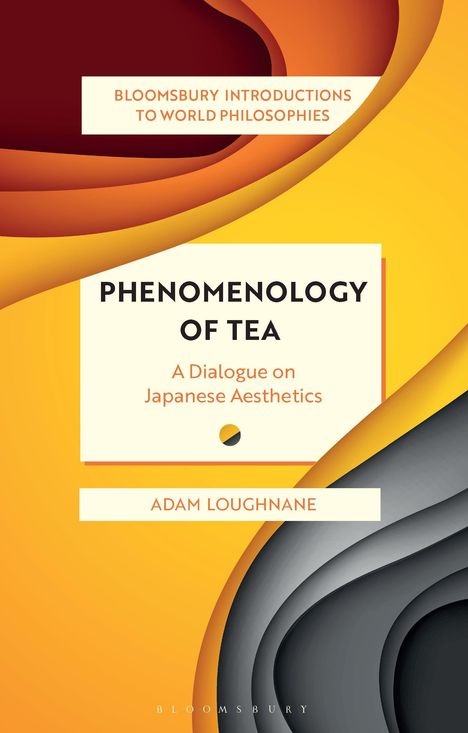Adam Loughnane: Phenomenology of Tea, Gebunden
Phenomenology of Tea
- A Dialogue on Japanese Aesthetics
Sie können den Titel schon jetzt bestellen. Versand an Sie erfolgt gleich nach Verfügbarkeit.
- Herausgeber:
- Monika Kirloskar-Steinbach, Georgina Stewart, Leah Kalmanson, Nader El-Bizri, James Madaio, Takeshi Morisato, Pascah Mungwini, Ann A Pang-White, Mickaella Perina, Omar Rivera
- Verlag:
- Bloomsbury Academic, 04/2026
- Einband:
- Gebunden
- Sprache:
- Englisch
- ISBN-13:
- 9781350246614
- Artikelnummer:
- 11424707
- Umfang:
- 368 Seiten
- Gewicht:
- 454 g
- Maße:
- 216 x 138 mm
- Stärke:
- 25 mm
- Erscheinungstermin:
- 2.4.2026
- Hinweis
-
Achtung: Artikel ist nicht in deutscher Sprache!
Weitere Ausgaben von Phenomenology of Tea |
Preis |
|---|---|
| Buch, Kartoniert / Broschiert, Englisch | EUR 23,27* |
Klappentext
An ideal introduction for students new to Japanese philosophy and aesthetics, Phenomenology of Tea invites readers into a dialogue throughout the fascinating aesthetic worlds of the Japanese tea ceremony, delving into its rich history, its philosophical influences and religious backgrounds all synthesized into a ritual, which brings Japanese culture to one of its highest expressions.
Tea guests begin their tour by discussing the deep intercultural challenges with foreign intellectual and artistic traditions, considering phenomenology and Kyoto School philosophy as means for bridging Eastern and Western worlds. Throughout the journey, the astonishing elements of the ceremony provoke discussion on the aesthetics of landscape gardening, of stone, vegetation, and water, and their philosophical significance in Buddhism, Daoism and Shintoism. Once inside the hut, the profound beauty of tea is revealed through traditional aesthetic practices of calligraphy, poetry, architecture, flower arranging, and pottery. As the plenitude of philosophic and aesthetic experience culminates in the first sip of matcha, readers are transported by way of Buddhist ideas into the world of Japanese cinema, where all ideas about the ceremony dissolve into emptiness.
Featuring a conversational style, discussion questions, further readings, and meticulous illustrations, this book also provides a phenomenological reading of the tea ceremony, and offers new avenues for research and teaching in the field.


